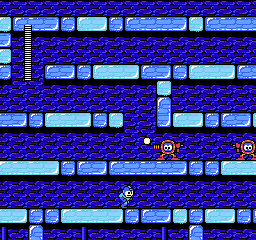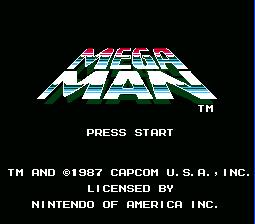

The most interesting new ideas, however, come from Mega Man 2.5D’s additional game modes.

There are plenty of returning enemies in the mix from classic games, with just enough tweaks to the environment to put players through their paces. Prepare to play and replay your way through tough jumps and enemies that like to hover just above your Mega Buster’s line of fire. Mega Man 2.5D retains the crushing difficulty of the original Mega Man. Tricks like this only add to the challenge. At other points, the game cleverly hides pitfalls behind foreground, requiring you to pay attention to your surroundings to avoid falling into a bottomless pit. Areas where you’re made to climb shift the camera, making it easier to gauge ledges from background. Often, the effect alters traditional Mega Man gameplay in subtle ways. It feels like something salvaged from some lost locked drawer deep in the Capcom vault. Mega Man himself is still a flat, 2D character, but often the game camera will shift to show depth in the platforms and walls, or pan around and force players to contend with a new perspective. The “2.5D” part of its title refers to its visual style, which adds a sense of three-dimensional depth, even though the game still operates in two dimensions.

Perspective shiftĪt first blush, the primary difference between the original Mega Man series, and its modern, fan-made counterpart is in how it portrays its game world. These new ideas, combined with spot-on platforming that feels exactly like the early Mega Man games, create the closest thing to a brand new Mega Man that fans of the series are likely to see for a long time. In fact, it isn’t “new” exactly: Rather than making an entirely new game, “2.5D” remixes levels from several of the first six or so Mega Man games.ĭespite the fact that it takes more than cues from the original series, it feels like something completely new, thanks to cleverly modified levels, new artistic flourishes like its eponymous camera “2.5D” camera angles, and wholly original game modes, including local multiplayer. A fan adaptation of the classic franchise in its 8-bit heyday, the game feels like something salvaged from a dusty drawer in the Capcom vault. But with those ideas, there’s often an attempt to recapture the nostalgic feeling of the games from which they took their cues to bring back the old way, even if it’s “refreshed.” Indie developers have been riffing on their favorite ideas of the past for years, and many creators have found ways to improve old formulas or update antiquated designs to make new, fresh ideas. It can be tough for modern games to recapture the essential, nostalgia-inducing “fun” of classics from the 8-bit era.


 0 kommentar(er)
0 kommentar(er)
